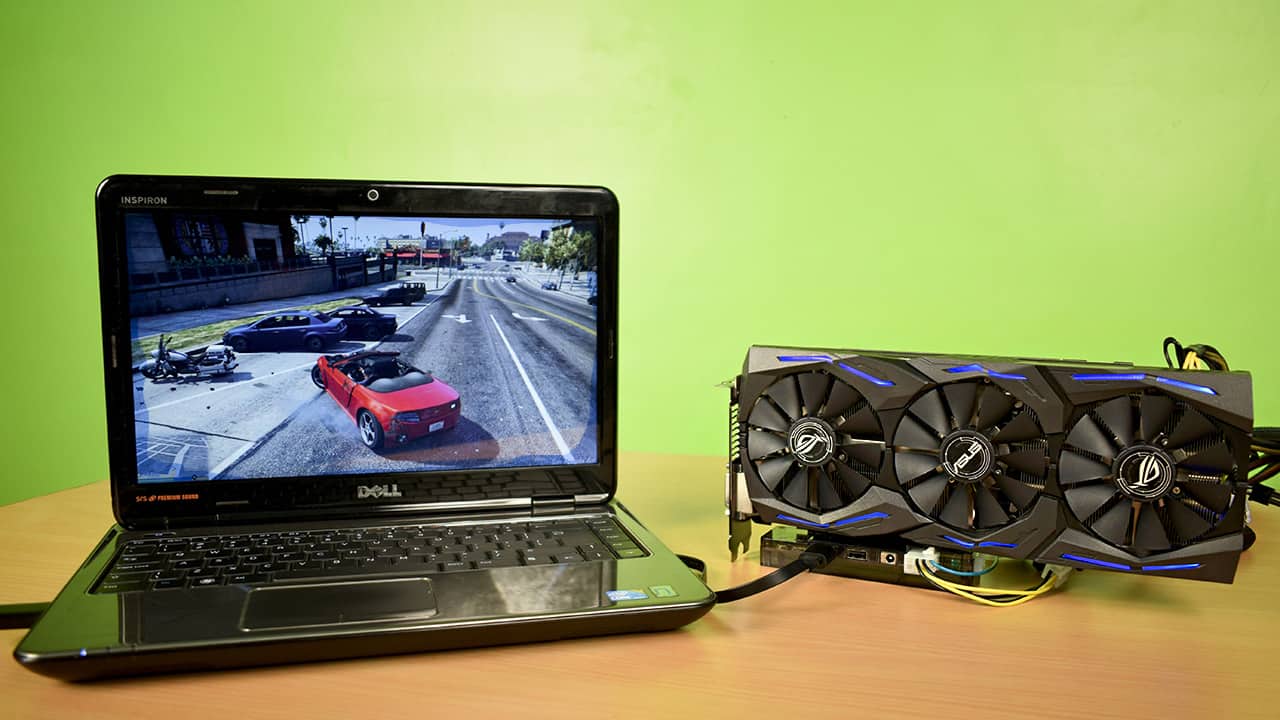
- #External graphics card for laptop screen software
- #External graphics card for laptop screen windows
NVIDIA GeForce GTX 1660 Ti with Max-Q Design.I was having the same issue, the i7-10750H has HDMI 2.0a support, which means it should support the refresh rate of 60Hz. TL DR: Delete ~/.config/monitors.xml and try different a different port on your monitor.
#External graphics card for laptop screen windows

Is there a way to enable/force at least 50Hz? I tried forcing the rate to 60, but that just led Ubuntu to considering the display as new (scaling 200%, primary was the laptop) and the refresh rate ended up 30 again. Still 30Hz, and the total pixelage is 3840x2160, so 8.3M, less than the internal screen + DELL combo. I disabled the laptop's internal screen, to keep only the monitor in a Single Display configuration. The resolution of the new monitor is nothing crazy, only 67% more than the previous one. That was not the case with the 50Hz display. Not just scrolling text pages, but even typing "aaaaaaaaaaaaaa" in a single-line input field in Chromium lags. Using the supplied HDMI cable, I can only get 30Hz out of it at 3840x2160, and everything is slow. Yesterday, I replaced the DELL monitor with a 4K monitor, the ViewSonic VP3268-4K. So far, I've been using an older external DELL U3417W monitor, which was running at 3440x1440 50Hz via HDMI without problems, in a Joint Displays configuration (total pixels 2560x1440 + 3440x1440 = 8.6M 60Hz and 50Hz respectively). The laptop's internal screen is 2560x1440. Or, you could get a nice used G750JW/JX/JH - those ROG laptops don't hve Optimus either.I have a modern laptop (Lenovo X1 Carbon 7th Gen, Intel® Core™ i7-8665U CPU 1.90GHz × 8, Mesa Intel® UHD Graphics 620 (WHL GT2), 16 GB RAM) running Ubuntu 20.04 with GNOME 3.36.2, in a dual-monitor setup.
/cdn.vox-cdn.com/uploads/chorus_image/image/63852231/akrales_190507_3406_0038.0.jpg)
If you can still return your G750JZ, you can get the G751JT/JY/JL - all new ROG laptops without Optimus.

In some other Optimus implementations you can switch using Nvidia or Intel/Optimus.

The output of the Intel GPU is directly connected to the internal / external display.
#External graphics card for laptop screen software
It is a physical wiring thing, not a software thing. The only thing you can change is where the rendering occurs, sometimes it does it automatically, sometimes you need to use the 3D settings to fix the usage to the Nvidia GPU, sometimes you can't change the rendering to the Nvidia GPU and the rendering and video output handling is all done via the Intel GPU.Įven though rendering can be done on the Nvidia GPU, all of the display handling - resolution / refresh / color balance / brightness / contrast / etc are all done through the Intel GPU and Intel GPU Control panel. Serzet, the little graphic is telling you that the output of the Intel GPU is feeding the Display - and it is correct. I have already gone into "manage 3d settings" and set the nvidia card as the default for games however, I can't use it for the laptop display.Īlso already tried going into BIOS but there is no chipset option to disable intel.


 0 kommentar(er)
0 kommentar(er)
